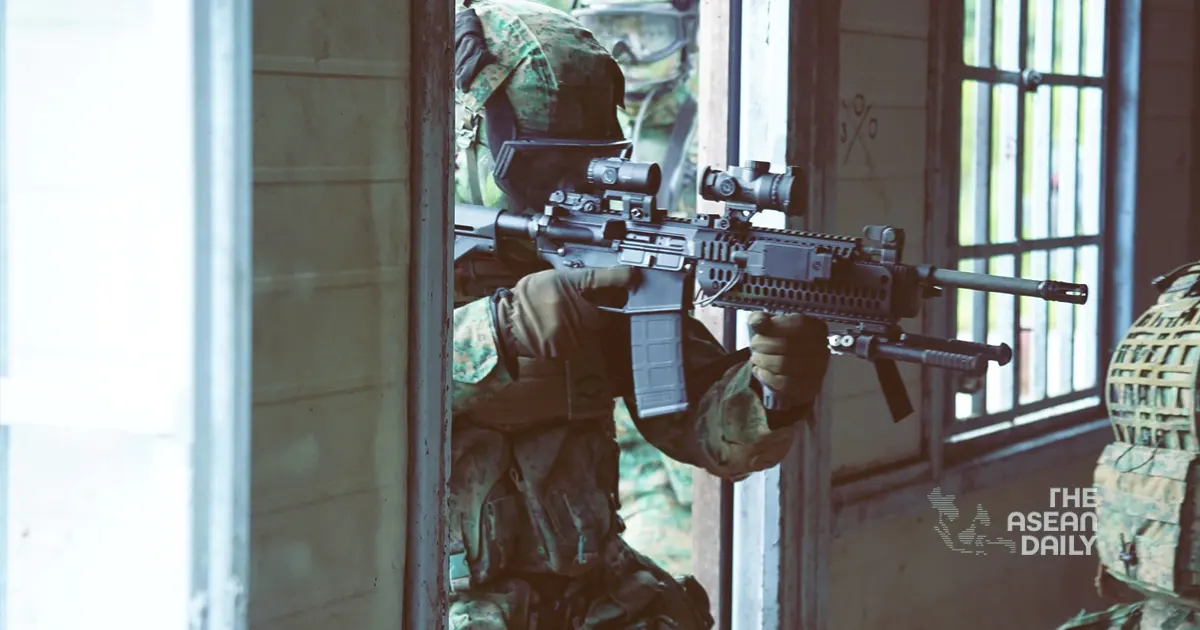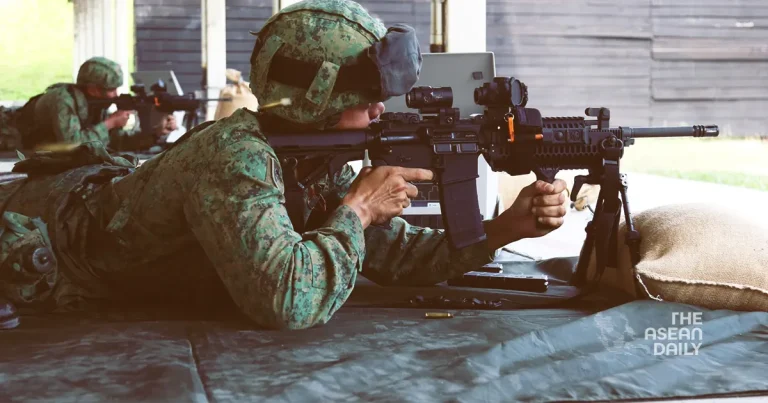18-7-2024 (SINGAPORE) The Singapore Army is set to fully equip all its active units with a cutting-edge light machine gun (LMG) by the end of July, as announced by the Ministry of Defence on 17 July. This modernisation effort marks a new era in the army’s small arms arsenal.
The newly adopted Colt Infantry Automatic Rifle (IAR) 6940E-SG is poised to replace the Singapore-made Ultimax 100 Section Automatic Weapon (SAW), which has been in service since 1982. Described as more reliable, accurate, and ergonomic, the new LMG represents a substantial upgrade in firepower and versatility.
Lieutenant-Colonel Chan Wen Kai, head of plans at HQ Singapore 9th Division/Infantry, highlighted the strategic importance of this acquisition. “This modernisation aligns with our need to adapt to evolving operational contexts, particularly the increasing prevalence of urban operations,” he explained during a media briefing at the Multi-Mission Range Complex in Pasir Laba Camp.

The Colt IAR boasts impressive specifications that outshine its predecessor. With an effective range of 600 metres compared to the SAW’s 460 metres, and a firing rate of 700 to 1,000 rounds per minute – a significant increase from the SAW’s 400 to 600 – the new LMG promises enhanced combat effectiveness. Its lighter and more compact design also improves mobility in the field.
Advanced features include a 3x magnification scope with a red dot sight, vastly improving aiming accuracy over the SAW’s traditional iron sights. A multi-purpose laser aiming device, complete with a torchlight and infrared laser, further enhances the weapon’s versatility in various combat scenarios, particularly in low-light conditions.
Master Sergeant Mohd Nazhan Alkamah, a senior trainer at the Infantry Training Institute, praised the weapon’s user-friendly design. “The adjustable buttstock and foregrip, along with ambidextrous features, make it comfortable for both right and left-handed soldiers,” he noted. MSG Nazhan also highlighted the gun’s improved accuracy and reduced recoil, even in fully automatic mode.

The procurement process, led by the Defence Science and Technology Agency (DSTA), involved rigorous evaluation based on operational effectiveness, reliability, maintenance, and cost. Ms Elizabeth Tan, DSTA’s programme manager for systems management, emphasised the comprehensive nature of the selection process, which included extensive market surveys and firing trials.
While specific details about alternative weapons considered, local manufacturing plans, and procurement numbers were not disclosed, Ms Tan expressed pride in her involvement. “It is a significant responsibility because it affects the combat effectiveness of our soldiers,” she stated.




